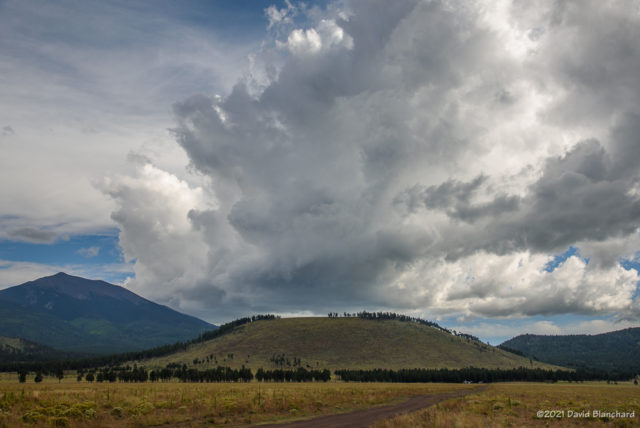We are in the midst of the “Transition Season” where the summer monsoon pattern fades away and the mid-latitude westerlies and low pressure systems move across the area. Another of these events is in progress as a weak closed-low moves across the southwest bringing showers and thunderstorms to the area.

Saturday afternoon we set out for the north side of the San Francisco Peaks hoping that thunderstorms would form over the higher terrain and then move northwestward across Kendrick Park. A few storms did form over the peaks and some of them were briefly photogenic but there was very little in the way of lightning. Eventually, approaching rain chased us from Kendrick Park to the northwest where we set up near Slate Mountain in a large meadow with good views of the peaks.





These slow-moving storms continued to move towards the northwest and this time we got lightning and rainbows—and rainbows with lightning. As the sun dropped lower in the west the rainbow quickly faded and rain was again approaching our location. We retreated back to Kendrick Park—this time with the thunderstorms located to our northwest with light from the setting sun still illuminating some clouds. Lightning stikes were frequent and close enough to fill the field of view of the 17-mm focal length lens. Several of these lightning bolts struck the northern flanks of Kendrick Peak. About a half-hour after sunset it was over and the storms quickly dissipated.
Another fun day of storms and lightning.



